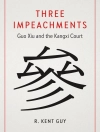This anthology explores the relationships and interdependencies between literary production and distinctions of taste by examining how the material aspects of literary texts, such as the cover, binding, typography, and paper stock, reflect or even determine their cultural status. In the nineteenth century, for example, the industrialization of printing made possible a wide range of cheap formats, such as dime novels, pulp magazines, and paperbacks, which made literature available to a mass reading public. The increased demand for new content effectively lowered the cultural entrance level, which resulted in a tremendous expansion of popular or trivial fiction. These developments were often perceived as a threat to traditional literary institutions, which increasingly relied on material distinctions as a way of preserving their cultural authority, and some publishers even attempted to mimic the conventions of exclusivity by creating deluxe editions that were designed to preserve the privileged status of so-called “highbrow” texts. In many cases, the distinctions between “highbrow” and “lowbrow” taste actually had little to do with the content of the texts themselves, as books more often functioned as markers of socioeconomic status, like clothing or home décor. At the risk of being provocative, one might even go so far as to say that the concept of literary taste was more closely related to fashion sense than critical judgment. The anthology seeks to address this claim by examining how the tensions between consumerism and prestige reflect fundamental historical changes with regard to the development of technology, literacy, and social power.
The individual chapters cover a wide range of historical periods, genres, and national literatures, and they are divided into four sections that focus on different ways in which the materiality of literature is related to cultural prestige. The first section, “Material Forms and Literary Publishing, ” focuses on how writers and publishers used the material properties of books to enhance their symbolic value and to challenge the idea of literature as a mass-produced commodity. These material strategies thus served to reinforce traditional distinctions of taste, which were closely aligned with the power of the literary elite, as the consumers of deluxe editions often sought to acquire respect and admiration within their social spheres. The second section, “Material Distinctions in Popular Fiction, ” examines how the publishers of popular texts also used the material properties of books to enhance their symbolic and economic value, as works that were perceived as less prestigious were often more marketable, yet they could appeal to different groups of readers in different ways based on an alternative set of cultural distinctions. Instead of using books to signify their socioeconomic status, for example, fans of popular genre fiction more often fetishize special editions as a way of gaining prestige within their own reading communities. The third section, “Cultural Prestige and Graphic Narratives, ” focuses on how the material properties of visual texts were also used to signify the differences between “low” and “high” art. The graphic novel format, for example, often served to enhance the status of previously lowbrow content by presenting it as a durable work that was worthy of being sold in bookstores and preserved in archives. The fourth and final section, “Electronic Publishing and Reading Practices, ” also focuses on how new forms of electronic display are currently transforming the status of literary texts. While some contributors argue that e-books are potentially more prestigious than printed books, as they are less dependent on the economic imperatives of the publishing industry, others argue that printed books continue to serve a crucial non-literary function as markers of socioeconomic status. As with the other sections, therefore, the contributors in this section agree that distinctions of taste are still largely dependent on the materiality of literature, as the material properties of literary texts continue to reflect and influence their cultural prestige.
Daftar Isi
Acknowledgments; Contributors; Introduction: Consumerism and Prestige; Section One. MATERIAL FORMS AND LITERARYPUBLISHING, Chapter 1. Devotion and Consumption: Ludwig Tieck, Literary Pocketbooks, and the Novella Craze, Christoph Rauen; Chapter 2. Packaging Process: Peter Handke’s Writing for Sale; 3 Jacob Haubenreich, Chapter 3. Contrasts in the Brazilian Book Market in the Early Twenty-First Century , Laura Rivas Gagliardi; Section Two. MATERIAL DISTINCTIONS INPOPULAR FICTION; Chapter 4. Only the “Outward Appearance” of a Harem? , eading Memoirs of an Arabian Princess as a Material Text, Kate Roy; Chapter 5 Hidden Codes of Love: The Materiality of the Category Romance Novel, An Goris; Chapter 6. Stephen King’s The Girl Who Loved Tom Gordon: A Rhetorical Reading of the Schneekluth Edition Dust Jackets, Thorsten Bothe; Section Three. CULTURAL PRESTIGE ANDGRAPHIC NARRATIVES; Chapter 7. The Printing of Phantasms: The Illustrations of Nineteenth-Century Serialized Novels and their Appropriation in Max Ernst’s Collage Novel Une semaine de bonté, Philipp Venghaus; Chapter 8. From Penny Dreadful to Graphic Novel: Alan Moore and Kevin O’Neill’s Genealogy of Comics in The League of Extraordinary Gentlemen, Jeff Thoss; Chapter 9. Comic Books versus Graphic Novels: Commodity Forms and Cultural Prestige, Anthony Enns; Section Four. ELECTRONIC PUBLISHING ANDREADING PRACTICES; Chapter 10. The Book and the E-Book: Footnotes, Margins, and Typography in The Brief Wondrous Life of Oscar Wao, Bernhard Metz; Chapter 11. E-Book Collections as an Opportunity to Recover Unpublished or Forgotten Texts, Laura Hatry; Chapter 12. How Much Does the Symbolic Capital of Books Cost? Operationalizing the Prestige of Books in the Digital Age, Pasqualina Sorrentino and Massimo Salgaro; Index
Tentang Penulis
Anthony Enns is an associate professor in the Department of English at Dalhousie University.
Bernhard Metz is an associate director of the SNF-funded project “Online-Edition der Rezensionen und Briefe Albrecht von Hallers” at the University of Bern.












